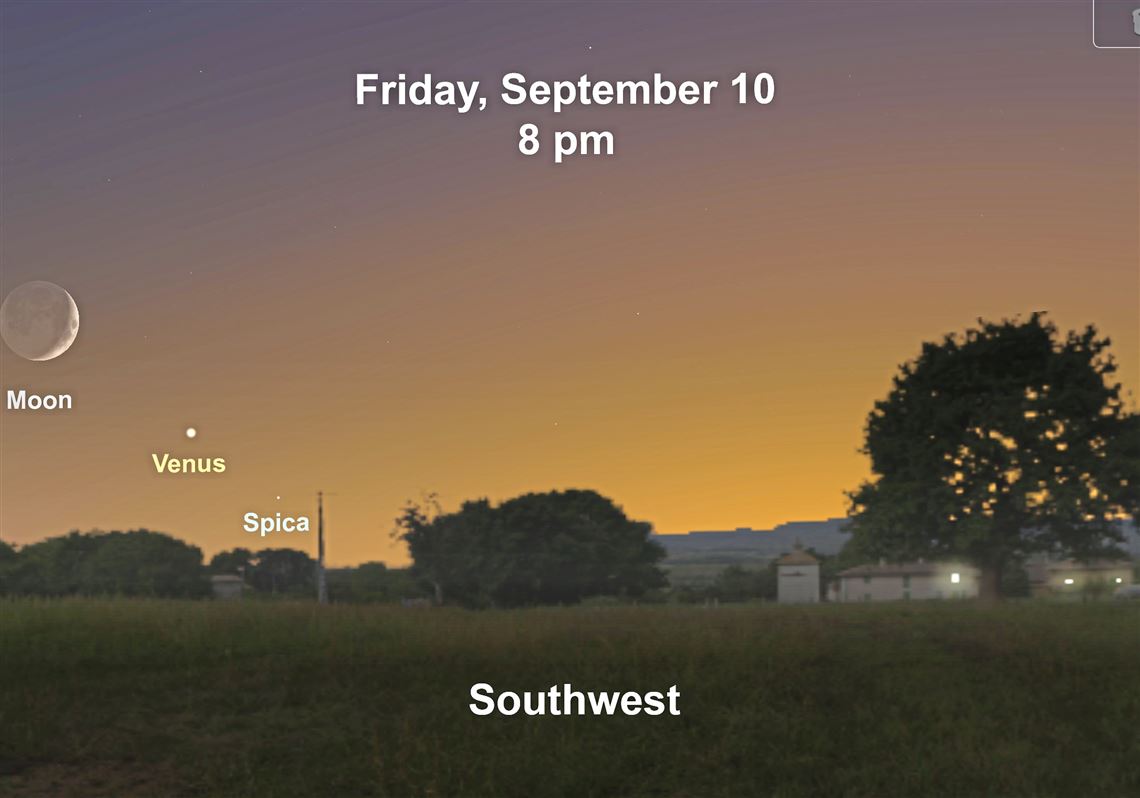Visible low to the horizon at twilight on Friday, the crescent moon will accompany Venus, a faint Mercury and Spica, the bright blue/white star of Virgo. Starting from the horizon and moving up left, look for Mercury, Spica and Venus, with the moon crowning the highest point of the lineup.
Spica, the brightest star in the constellation Virgo, is actually a double star. Both stars are larger and hotter than our sun. The distance between them is nearer than the sun to Earth. They are so close, the two appear as an egg shape. Each can only be distinguished as separate by their spectra. By observing Spica, Greek astronomer Hipparchus discovered the faint wobble in Earth’s axis.
Spica translates to “ear of wheat,” which is held in the hand of Virgo, the maiden. Virgo is often associated with the myth of Demeter, the Greek goddess of the harvest, and her daughter, Persephone. When Persephone visits the underworld, Demeter refuses to let crops thrive, the ancient explanation for fall and winter.
Another legend is that Astraea, a goddess in the golden age of Greek gods, was the last one among people when Pandora opened the box containing horrors. Astraea, who held hope humans would become better, was lifted into the heavens by Zeus. Dazzling Venus, goddess of love and fertility, remains near Spica through September.
First Published: September 7, 2021, 10:00 a.m.















